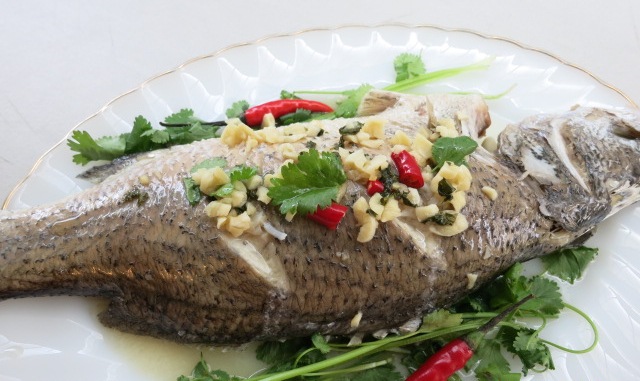
Several years ago, in a Thai restaurant somewhere in Pasig, my friends and I had a fish dish which I thought was absolutely heavenly.
The fish was laid over a simmering broth that was bewitchingly sour, spicy, sweet and savory all at the same time—a rare, perfect balance of flavors.
Made with limes, chilies, garlic and a touch of sugar, the broth was kept bubbly hot by a flame placed underneath the fish platter.
The restaurant has since closed, unfortunately, but I’ve never forgotten that dish. Whenever I dine in a Thai restaurant I look for it in the menu, hoping to recapture once more that
enchanting tangy flavor.
Perhaps the best one I’ve tasted so far is the one at Tamarind—a Thai restaurant in SM Aura, where it’s listed on the menu as “pla manao.”
Other Thai restaurants also serve pla manao, but the taste of the broth is different. Maybe it’s because, lacking a supply of limes, these restaurants use lemon or calamansi instead, which isn’t the same at all.
Real limes have an emerald green interior, contain no seeds and have a unique flavor all their own. Even their fragrance is so inviting, their whiff hinting not of sourness but, strangely, of sweetness.
Limes are so enticing and can be used to enhance so many recipes that I wonder why nobody imports them to Manila. Or, for that matter, why we can’t grow our own limes here, like they do in Thailand. A substitute for lime would be dayap, but there doesn’t seem to be an abundance of dayap in Metro Manila, either.
To get my supply of limes, I buy them whenever I travel, or I cajole friends and relatives living overseas to bring me some whenever they come to visit (the limes from Australia are particularly good).
Recently, during a trip to Hong Kong, I swiped some limes from the breakfast buffet which were scattered nonchalantly around a bunch of fruits (if they knew how rare these are in the Philippines!).
As a result, I was able to cook pla manao at home, using those precious limes.
Here’s the recipe, for readers who like a tangy broth with their steamed fish. I hope they’ll be able to find their own source of limes like I did.
Steamed Fish with Lime Sauce
1 large whole apahap (seabass)
Coarse salt
1 whole head garlic, peeled and crushed
8-10 stems wansuy (coriander)
Water, for steaming
For the lime sauce:
1 tbsp finely chopped garlic
5 tbsp white sugar
5 tbsp patis (fish sauce)
½ c fresh lime juice (from 3 to 4 limes, see tips)
1/3 c water
1-2 siling labuyo (bird’s eye chilies), optional
For garnish:
Wansuy leaves
Chopped garlic
Bird’s eye or long chilies
Clean the apahap well, removing the gut and the scales (you can ask the fish monger to do this for you when you buy the fish). Cut two diagonal slits on both sides of the belly and near the tail of the fish. Rub the fish with coarse salt, then rinse well.
Insert some garlic cloves and wansuy leaves inside the fish. Prepare the steamer, making sure there’s enough water in it. Arrange the fish in a heat-proof plate and place it in the steamer. Cover the steamer tightly.
Steam the fish over medium heat for about 15 minutes (depending on the size of the fish). Check the fish after around 15 minutes.
The fish is cooked when the eyes have bulged and the flesh of the fish is white and flaky (should not be glassy). If it is not yet cooked, continue steaming for a few more minutes.
When the fish is cooked, take it out of the steamer and remove the garlic and wansuy leaves.
Transfer the fish to a clean plate. Pour half of the lime sauce over it and garnish with wansuy leaves, garlic and chilies. Serve the remaining lime sauce on the table. Serve immediately.
To make the lime sauce:
Combine the garlic, sugar, patis, lime juice, water and chilies (if desired) in a saucepan. Heat for one to two minutes. Pour half over the cooked fish and serve the remaining sauce on the table. Garnish the fish with wansuy leaves.
Cook’s tips:
Green lemons are not the same as limes, but they can be used in this recipe, too (though the taste will be slightly different). A better substitute would be dayap.
Make sure you use wansuy, not kinchay, which may look similar to wansuy but has a very different taste and aroma.
You can also cook this with lapulapu, mayamaya or any whole white fish.














































